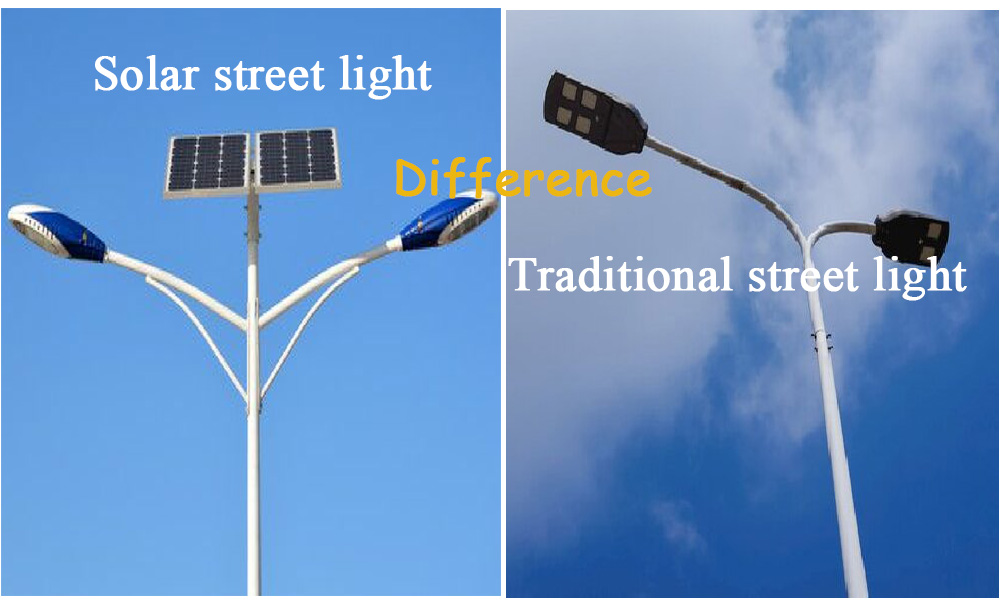As the control component of solar street lights (solar courtyard lights), solar controllers play an irreplaceable role in solar street light systems, such as the human brain or computer processor. Although they are small in size, they play a core role, so choosing a high-quality controller is particularly important. Below is a brief introduction to the key points to pay attention to when selecting a controller:
1: Exit protection voltage
Some users have found that after working for a period of time, especially after several consecutive rainy days, the solar street light will not light up for several days or even many days, and the battery voltage is normal during testing. The controller and light source are also not malfunctioning. This issue has once puzzled many maintenance personnel, but in fact, it is a problem with the voltage value of "exiting undervoltage protection". The higher this value is set, the longer the recovery time after undervoltage, which has caused many days of inability to work properly.
A high-quality controller should allow each customer to set the voltage value for exit protection based on their configuration. However, it is worth noting that the configuration of the battery panel must be reasonable. If the daily charging capacity of the battery panel cannot meet the discharge capacity of the night, the battery will often be in deep discharge and its lifespan will be greatly shortened. Therefore, the configuration of the battery panel must increase the margin. The larger the configuration of the battery panel, the lower the exit protection voltage can be set, so as not to affect the battery.
2: Constant current output
Due to its own characteristics, LED light sources must be subjected to constant or limited current, either for normal use or affecting their lifespan. Common LED lights achieve constant current through the addition of an additional driver power supply, but this driver consumes significant power consumption. Therefore, people have also found ways to integrate constant current into the controller, which not only simplifies installation but also reduces power consumption.
3: Output period
Ordinary controllers can only be set to turn off for several hours after turning on the lights, such as 4 or 8 hours, which cannot meet the needs of many customers. A high-quality controller should be able to freely set time periods, with the time of each time period being freely set, and multiple modes of on and off setting. Even better, it can be set independently in different channels.
4: LED light output power adjustment
Among solar powered lamps, LED lamps are the most suitable for outputting different powers through pulse width adjustment. While limiting pulse width or current, adjust the duty cycle of the entire output of the LED lamp. For example, for a single 1W LED with 6 strings and 5 and a total of 30W, the power can be adjusted during the late night and early morning periods, such as adjusting it to 15W at night and 24W in the early morning, and locking the current. This not only meets the requirements of all night lighting, but also saves the configuration cost of battery panels and batteries. After long-term experiments, it has been proven that LED lamps with pulse width adjustment method generate much less heat throughout the entire lamp, which can extend the service life of LEDs.
5: Heat dissipation
Many controllers do not consider heat dissipation in order to reduce costs. As a result, when the load current or charging current is high, the heat increases and the internal resistance of the controller's field tube is increased, resulting in a significant decrease in charging efficiency. After the field tube overheats, the service life is also greatly reduced or even burned out, especially in the high outdoor temperature in summer. Therefore, a good heat dissipation device should be essential for the controller, Iron or plastic casings cannot meet the summer heat dissipation requirements, so aluminum casings are the preferred material for controller hardware.
6: MCT charging mode
The charging mode of a conventional solar controller is to copy the three-stage charging method of a commercial charger, which includes three stages: constant current, constant voltage, and float charging. Due to the infinite energy of the urban power grid, if constant current charging is not carried out, it will directly cause the battery to explode and be damaged. However, the power of the solar street light system's battery panel is limited, so it is not scientific to continue using the constant current charging method of the urban power controller. If the current generated by the battery panel is greater than the current limited by the first section of the controller, it will cause a decrease in charging efficiency. The MCT charging method is to track the maximum current of the battery board without causing waste. By detecting the voltage of the battery and calculating the temperature compensation value, when the voltage of the battery approaches the peak, a pulse type trickle charging method is adopted, which can not only fully charge the battery but also prevent overcharging.
7: Waterproof and moisture-proof performance
Coastal users can best understand that a controller that is not waterproof may corrode the circuit board after about six months. For the convenience of maintenance, most customers place the controller on the base of the lamp pole. However, many lamp pole manufacturers have poor sealing of the base. When it rains, rainwater will enter. This type of controller that is not completely waterproof is likely to corrode due to water ingress. When the amount of rainwater enters is large, it will instantly cause a short circuit in the controller circuit. Another thing to note is that the wiring terminals should be wrapped with waterproof tape, as ordinary insulation tape cannot guarantee that the wiring will not enter the water.
8: Temperature compensation function
This is an easily overlooked issue, but it is a very important and essential feature. The unique negative temperature characteristic of the battery makes the battery voltage higher at low temperature and lower at high temperature. When the controller is charging, it monitors the voltage of the battery in real time. Generally, a 12V battery detects around 14.5V for protection to prevent overcharging and damage to the battery. If there is no controller with temperature compensation function, in high and low temperature usage environments, the real-time voltage detected by the controller on the battery will have a significant error, directly leading to serious consequences such as insufficient charging in low temperature environments and overcharging in high temperature environments.

ADDRESS:Guoji Industrial Concentration Zone, Songqiao Town, Gaoyou City
Online Messages
Scan the QR code

View Mobile
Copyright ? 2021-2023 Yangzhou Borui Optoelectronic Lighting Co., Ltd. All Rights Reserved 備案號(hào): 蘇ICP備2023016865號(hào)
Technical support: WDL